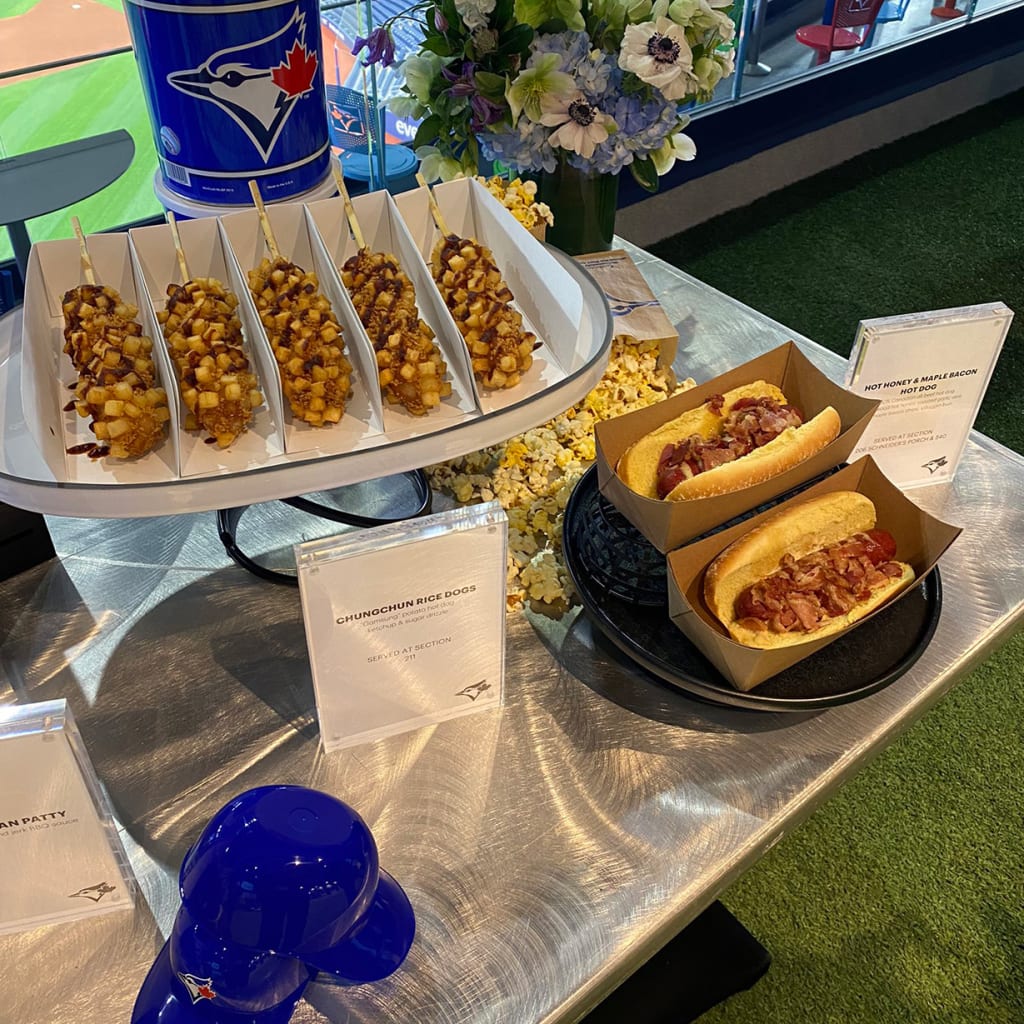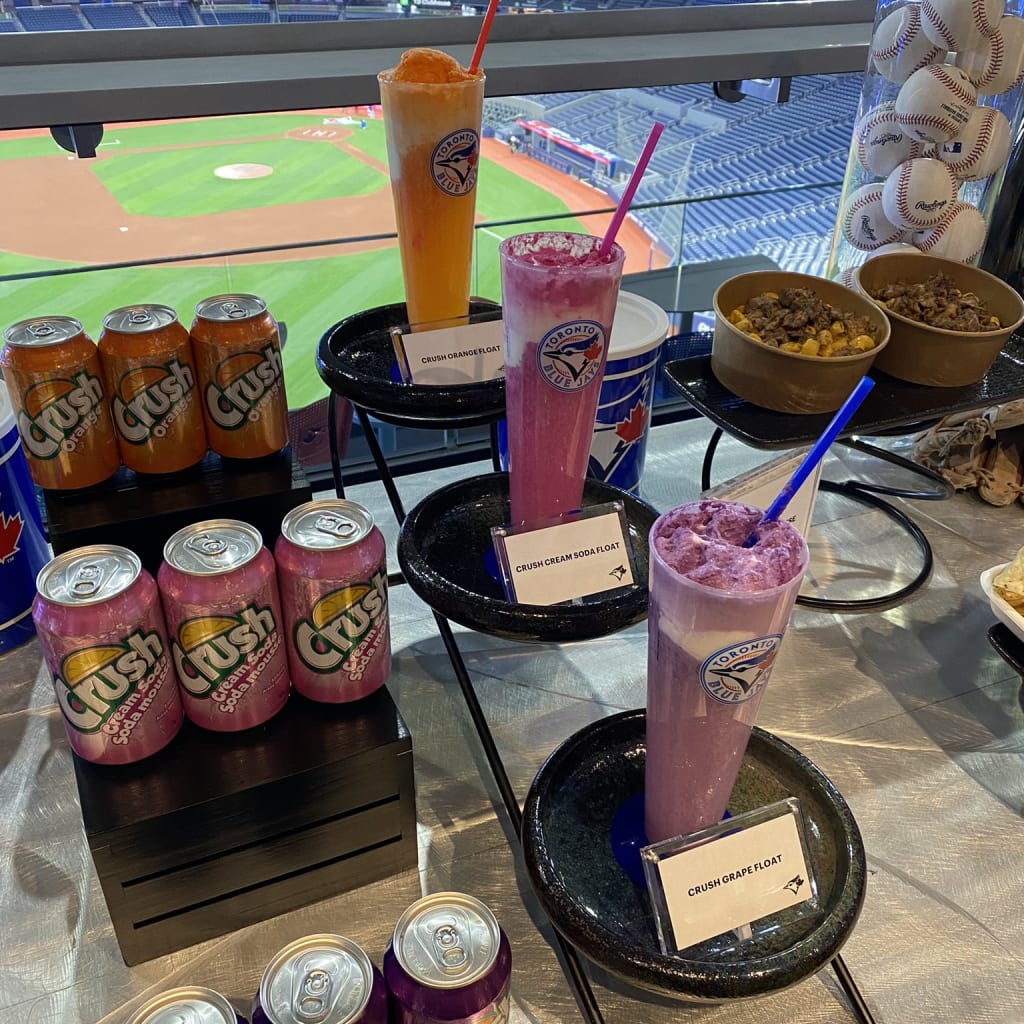TORONTO -- You’ll see bits of different ballparks at Rogers Centre this year.
The new lower-bowl seats, padded and wider, are reminiscent of the Cubs' Wrigley Field. The dugouts, bigger and moved closer to the stands, are a mix between Atlanta's Truist Park and Minnesota's Target Field. The premium seating behind home plate draws from Yankee Stadium.
All of that is by design. But as the Blue Jays wrap up Phase 2 of their renovations -- including a brand-new lower bowl, field and player facilities -- the club highlighted the intention of keeping it all unmistakably Torontonian.
“We visited so many ballparks,” Marnie Starkman, Toronto's EVP of baseball operations, said on Thursday at Rogers Centre. “ … You take a little bit of everything, but we’re still Toronto. There’s still a different way of experiencing sports here.”
Representing the diversity of the city in a cohesive way was one of the challenges for the Blue Jays in their $400 million ballpark renovation project. It started last year, with a revamped outfield and expanded culinary options, and it continued this season with a massive excavation that made way for a new lower bowl.
All seats in the 100 level are now angled to face home plate, something that hadn’t been possible up until this point, because Rogers Centre was originally built as a multi-purpose stadium in 1989. Wider and padded seats -- with much-anticipated cup holders -- should add comfort, too. Fans will also have the option of premium seating later in the year, with three different premium clubs located in the first few rows of the lower bowl. The club partnered with Populous for the design, then with PCL Construction for the execution.
The main emphasis was bringing fans closer to the action, something the club achieved by reducing foul territory by approximately 3,000 square feet and moving the dugouts down. It’s a continuation of what was done in Phase 1, with raised bullpens and a bleacher section in the outfield. The 100 level also got expanded drink rails this year, and the club upped its accessible seating by 18% through the renovations.
“[Fans can] now sit in their seats and be like, ‘OK, I can feel the game differently; I can experience the game differently,’” Starkman said. “Then, I think I’m excited for people to just experience the bowl differently: the change of bringing the bowl in, opening the concourse, adding drink rails.”
Toronto’s diversity is especially well represented in the culinary options, which vary from classic poutine to Jamaican patties and Chungchun rice dogs. For the traditionalists, popcorn and hot dogs are still very much available.

The goal is to grow the game and bring in fans from different walks of life through diversified experiences. The Blue Jays trust that their investments will pay dividends beyond this generation.
“When I think of the types of fans that we need to turn into Blue Jays fans and experience our game, it’s a younger generation that doesn't watch baseball like how I was forced to watch as a kid, which was: you sit there, you watch all nine innings and those nine innings had no pitch clock,” said Starkman. “ … I think that, for the next 10 years at least, this ballpark can do some of those things.”
The intention is as massive as the undertaking. From Toronto’s last game of 2023 to now, the organization had approximately six months to complete a project expected to last anywhere between one and two years.
“Nothing existed here just a few months ago,” president and CEO Mark Shapiro said, standing behind home plate in the 100 level. “That feat alone is remarkable.”

All of this meant the team needed to start the season with a lengthy road trip for the second year in a row, as preparations for Monday’s home opener are expected to continue all the way through Sunday evening. The whole finished product isn’t expected until around mid-season, when premium seating opens and all of the final touches are in place.
But players will see plenty of benefits when they come home, too, including new clubhouses, state-of-the-art training rooms, cold-plunge and meditation rooms, amid other improvements.
“This is the type of generational project that we had to decide, as an organization, whether we were going to do it,” Starkman said. “When we made that decision, we knew our tight timelines. … We knew that we needed until Monday, and that was a decision that we all had to make together, and one we knew [we’d have to make] going into this project.”


